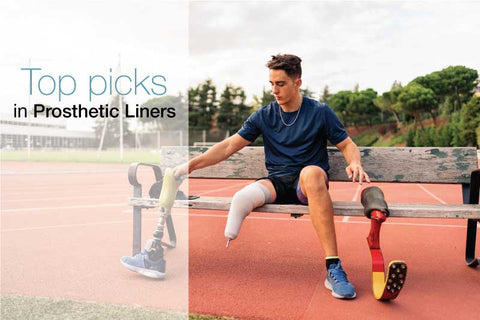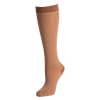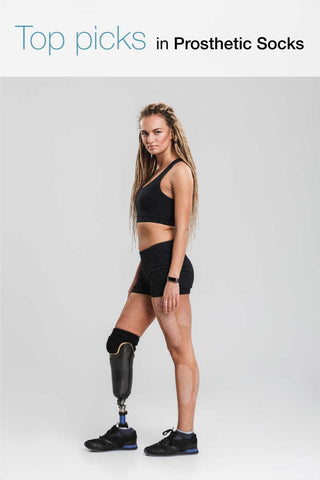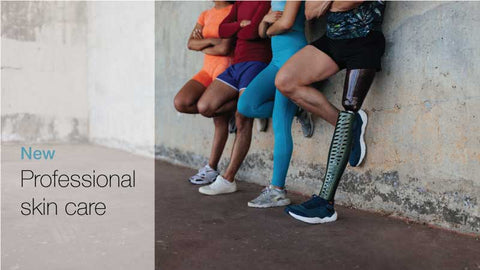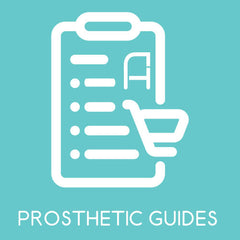Navigating Pregnancy After Lower Limb Loss
Reading Time: 6 minutes
Pregnancy is a transformative journey that brings many changes, both physically and emotionally. But for women who have lost a leg or have limb difference, matrescence comes with added challenges, including changes in mobility and prosthetics and increased physical strain.

A recent survey published in the journal Prosthetics and Orthotics International in April 2025 explored these challenges by collecting information from women from various provinces in Canada. These women became pregnant within five years after their amputation.
The study participants
In total, the study included 16 Canadian women who shared their experiences across 31 pregnancies after their amputations. Of these participants, nine had undergone amputation due to trauma or cancer, while seven had a limb difference from birth. Most of them had lost one leg, with many having above-knee amputations.
All women who took part in the study were experienced prosthetic users and had a high level of mobility (classified K4), allowing them to walk well both indoors and outdoors.
Mobility and prosthesis
During pregnancy, most participants (14 out of 16) continued to use their prosthetic limbs; however, nearly one-third had to either cut back on their usage or stop using them completely. As their pregnancies progressed, about six of the 16 participants began using additional mobility aids such as canes, walkers, or wheelchairs.
The researchers found several key challenges:
-
Swelling and changes in limb size. Many experienced swelling in their residual limbs, which caused the prosthetic sockets to fit too tightly and become uncomfortable.
-
Decreased balance. As the pregnancy advanced, the growing belly shifted the weight distribution, leading to increased instability, especially in the sound-side leg.
-
Falls. Almost 38% of the participants experienced falls at least once during their pregnancies, highlighting concerns about safety and balance.
Despite these issues, six women successfully got new prosthetic fittings during pregnancy when adjustments to their old ones weren’t possible.
Physical and emotional health
While fatigue and back pain are considered standard pregnancy symptoms, women with lower limb loss can expect additional issues. For instance, 64% of women reported experiencing low back pain, which seemed to be worsened by uneven weight distribution and changes in walking patterns.
Additionally, postpartum depression affected 25% of these women, a figure significantly higher than the 8.7% national average in Canada. There were also unusual trends concerning childbirth methods, 45% of pregnancies resulting in cesarean deliveries—much higher than the typical rates seen across Canada.
Other medical issues included conditions such as hypertension, preeclampsia, carpal tunnel syndrome, pregnancy loss, bursitis, skin problems, and rare cases of phantom limb pain.
Postpartum mobility
The challenges regarding mobility did not simply vanish after delivery. While 64% of women were able to resume using their prosthetic devices within a few days after giving birth, the remaining women faced longer waits, sometimes taking weeks or even months to walk again with a prosthetic leg.
Alarmingly, the survey found that nearly 40% of these women did not have a backup mobility option planned, which meant that many found themselves needing wheelchairs during the early weeks after giving birth.
Real advice from the study participants
The study participants shared valuable advice based on their experiences, offering encouragement and practical tips for navigating challenges.
One key piece of advice is to listen to your body but stay active and healthy. Another helpful suggestion is to wear a compression shrinker when your prosthetic leg is not in use. If you notice that your prosthetic is becoming too small due to residual limb swelling, consider having your liner adjusted.
Creating a mobility plan is also important. Depending on your situation, you might want to borrow or purchase a wheelchair. If you begin to experience any issues with fit or balance, stop using your prosthesis right away.
They also highlighted the following essential strategies:
-
Be proactive. Anticipate issues like swelling, weight changes, and discomfort with your prosthetic. It’s a good idea to have backup solutions in place, such as renting or buying a wheelchair for your later pregnancy stages and early postpartum period.
-
Stay connected with your prosthetist. Regular adjustments or replacements of your socket may be necessary as your body changes.
-
Protect your sound side leg. Consider using joint-friendly aids early on if you notice changes in your balance.
-
Seek mental health support. The emotional weight of your pregnancy can often be just as significant as the physical challenges you face.
For the caregivers
The survey also offers valuable information for the teams supporting these women. These insights may also be helpful for family members:
-
For obstetricians and midwives: Be prepared for higher rates of C-sections and potential postpartum mood challenges.
-
Rehabilitation specialists: Keep an eye on balance and ensure prosthetic fittings are appropriate. Also, encourage safe physical activity.
-
Prosthetists: Provide proactive advice and make socket adjustments accessible during pregnancy.
-
Care teams: Discuss mobility options after delivery in advance and ensure wheelchairs are available.
Looking ahead
Although this study has limitations due to its small sample size and volunteer bias, it marks a significant step forward in examining mobility and prosthetic outcomes for pregnant women after losing a lower limb.
Moving forward, the researchers highlighted the importance of conducting larger studies in various healthcare settings, incorporating personal experiences into care guidelines, regularly screening for emotional and physical challenges, and developing structured plans to support the mobility needs of expectant amputees.
The bottom line
Women with lower-limb loss or differences can and do have fulfilling pregnancies. But they have to deal with unique challenges, such as ensuring prosthesis fit, managing mobility issues, dealing with an increased risk of falls, experiencing pain, and handling emotional stress.
To make this journey smoother, it’s essential to focus on awareness, teamwork, and careful planning. Steps like regular check-ins with a Prosthetist or renting a wheelchair can help turn a time of uncertainty into one filled with empowerment and confidence.
Lastly, for both healthcare providers and women, it’s important to understand that informed and coordinated care, along with support from peers, isn’t just helpful—it’s essential for ensuring a safe, successful, and dignified pregnancy.
Related reading:
Chiropractic Treatments to Manage Sciatica
Prevent Workout Disruptions Caused by Overuse Injuries






